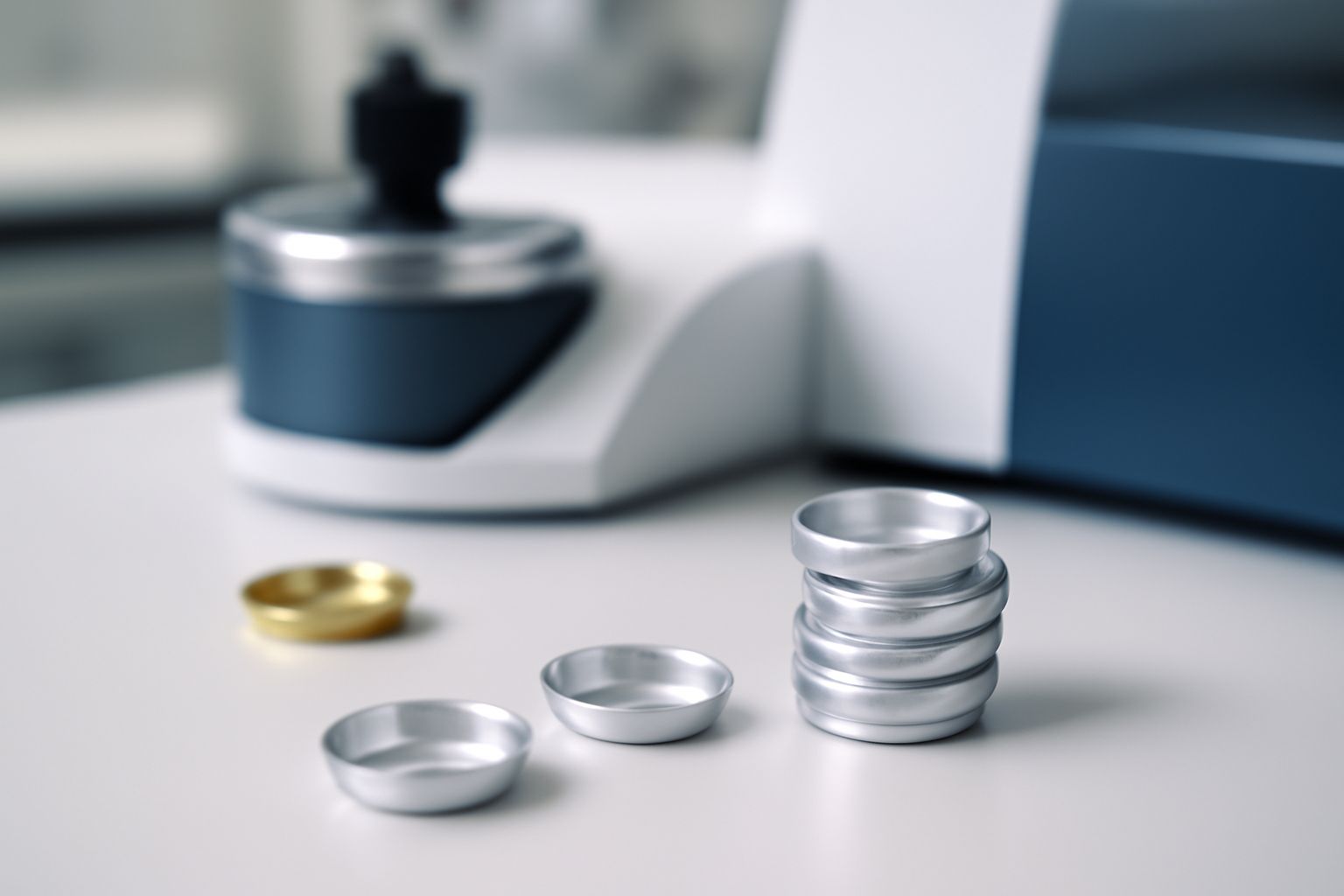Your cart is empty.
shop now
Your cart is empty.
shop now
Every DSC experiment starts with one choice: the right sample pan. Picking the wrong pan can waste time, money, and cause unreliable results.
The best DSC thermal analysis sample pan depends on your application. Choose aluminum pans for polymer analysis, platinum for high temperature, standardized pans for data speed, and custom designs for unique needs.

Each laboratory process poses unique demands for differential scanning calorimetry (DSC). Walking through these scenarios with clear choices helps you keep experiments smooth and results dependable.
Polymer materials react quickly to poor heat transfer. Choosing the right pan type is key when running thermal analysis experiments for polymers.
Aluminum DSC sample pans are the best option for polymer testing. They offer excellent thermal conductivity, low mass, and are affordable for frequent use.
| Material | Thermal Conductivity (W/m·K) |
Cost Level | Availability | Best Use Scenario |
|---|---|---|---|---|
| Aluminum | ~237 | Low | High | Most polymer melts, glass transitions |
| Platinum | ~71 | Very High | Low | High-temp, non-polymer applications |
| Gold-coated | ~317 (gold) | High | Medium | Samples sensitive to aluminum |
My own experience confirms that aluminum pans allow polymers to heat evenly, making it easier to spot transitions like melting points and glass transitions. Since polymer testing uses many pans, affordability is crucial. Disposable aluminum pans are easy to seal, work with low mass samples, and match almost all major DSC equipment. I always check purity and thickness to make sure each batch matches the accuracy I want for R&D work.
Standard sample pans can crack or deform when pushed past their limit. Picking the right pan for high-temperature testing saves time and test samples.
Platinum or high-temperature alloy pans are the best DSC sample pans for use above 600°C. These materials avoid deformation and contamination under harsh heat.
| Pan Type | Max Temperature (°C) | Reusability | Resistance to Oxidation | Cost |
|---|---|---|---|---|
| Platinum | 1600 | Yes (many times) | Excellent | Very High |
| Aluminum | 600 | No (single-use) | Low | Low |
| Graphite-coated | 1000 | Sometimes | Medium | Medium |
I use platinum pans when an experiment calls for extreme heat or repeated runs with potential contaminants. These pans do not react with most samples, preventing unwanted chemical interference. In my past projects, using platinum pans prevented warping or contamination, especially with tough samples like ceramics or ashes. While the price is higher, reusability makes them cost-effective for labs that do frequent high-temp work.
If you collect lots of thermal data, speed matters. Pans that heat and cool quickly help spot changes without lag or error.
Standardized aluminum pans offer the quickest thermal response for most labs. Consistent thickness and flatness lead to faster and more accurate results.
| Feature | Why It Matters | Data Collection Speed | Error Rate (%) | Recommendations |
|---|---|---|---|---|
| Consistent Pan Mass | Reduces baseline drift | High | <2 | Use for routine QA/QC |
| Flatness & Smoothness | Ensures good sensor contact | High | <3 | Pick trusted suppliers |
| Clean Surfaces | Avoids signal noise | Medium | <4 | Inspect before use |
For frequent measurements, I select pans with razor-thin tolerances—usually ±0.01mm. These guarantee heat flow through the sample matches the intended ramp rates. Based on a recent ACS study, small changes in pan mass make up to 2% difference in data. That's why I use supplier-provided specification sheets and compare them against my instrument’s requirements before starting time-sensitive experiments.
Some labs need a special type or size of sample pan that isn’t available off the shelf. Personal projects and complex research often demand tailored solutions.
Custom DSC sample pans can be made to match unique sample shapes, extra sealing, or non-standard sizes, helping labs get better and more reproducible results.
| Customization Option | Benefit | Example Application | Supplier Requirement |
|---|---|---|---|
| Size/Shape | Fit unique sample | Irregular powder, ribbons | Provide drawing/sample |
| Material Selection | Prevent sample reactions | Reactive chemicals | Specify compatibility |
| Sealing/Pressure | Test volatile materials | Airtight, pressure pans | Detail pressure specs |
I help labs customize pans to solve problems standard products cannot. Sometimes, a project involves volatile compounds. Pressure-sealed pans keep these stable during tests. In other cases, labs need nonstandard shapes to test ribbon materials or thick samples. As long as the user provides a drawing or sends a sample, suppliers like REDTHERMO can reproduce the design. Hands-on support and clear technical drawings let my clients get pans tailored to their analytical chemistry workflow while ensuring compatibility and reliability for their equipment.